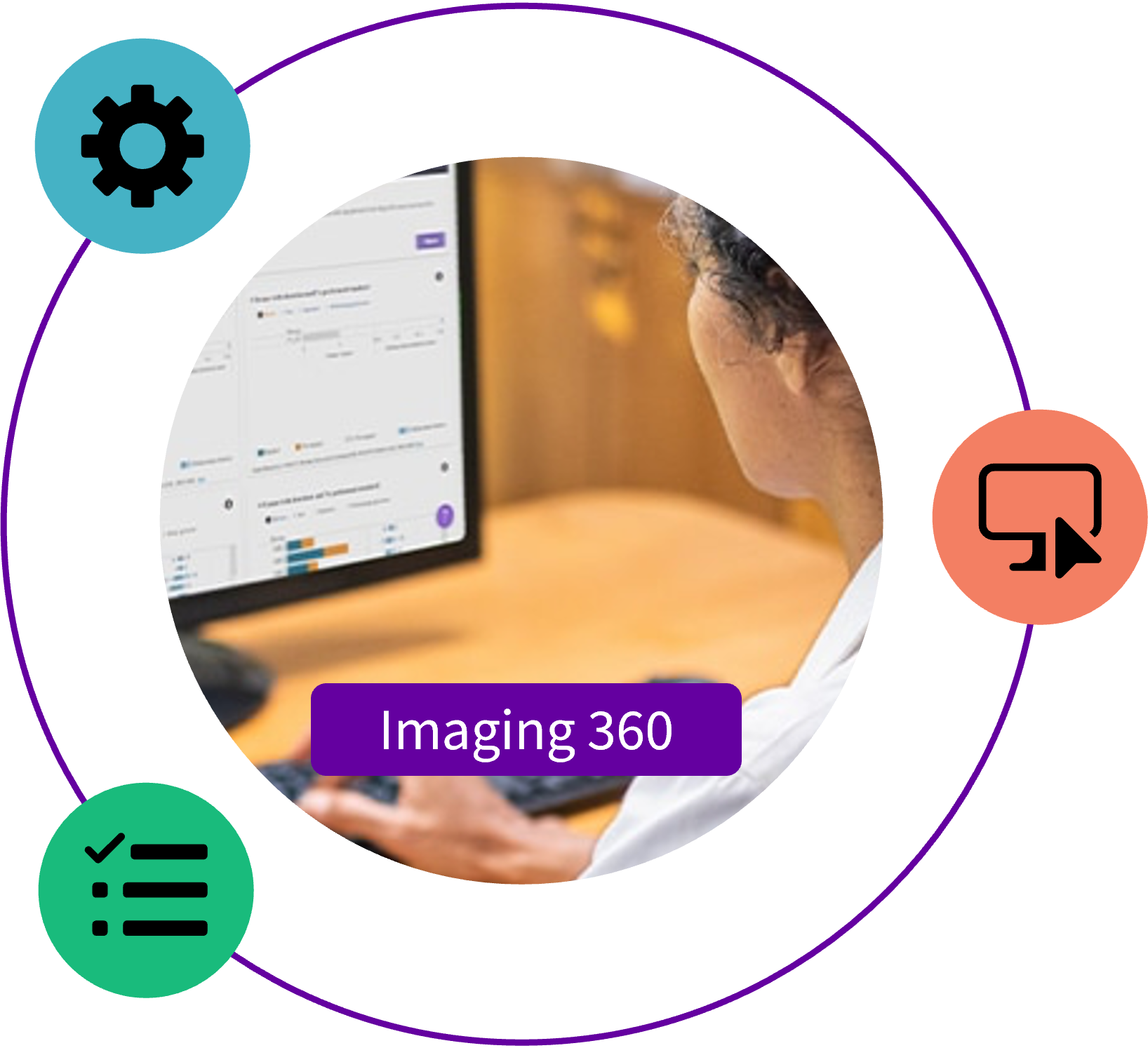Hospitals and health systems play a crucial role in delivering essential healthcare services to their patient communities, encompassing emergency care, specialized treatments, and medical imaging. Imaging examinations are a key component of over 80 percent of all visits to hospitals and health systems. As such, radiology departments are a foundation within the contemporary healthcare system. Yet, behind the scenes, fine-tuning an efficient and cohesive radiology operation can sometimes seem like a complex puzzle, operating multiple imaging scanners, various protocols, scheduling, and workflows.
A prominent radiology provider in Germany, Evidia, spanning across almost a hundred locations in various countries, including Germany, Sweden, Norway, and the UK, offers a full range of radiological, molecular imaging, and radiotherapy treatments through outpatient sites and hospital systems. As a result of growth from various mergers and acquisitions, Evidia found itself struggling with operational challenges due to the inherent diversity within its facilities.
Evidia addressed these challenges by collaborating with GE HealthCare to reshape the landscape of its radiology operations by participating in a pilot. Central to this overhaul was the introduction of GE HealthCare’s Imaging 360, an innovative operational hub aimed at delivering a comprehensive perspective on the radiology department. The goal was to establish uniformity and efficiency in operations, maintain high-quality standards, and empower the staff.
Creating transparency in complex radiology operations
Evidia’s rapid growth presented operational challenges, given that each facility had its own protocols, workflows, and systems. The group employs more than 1,800 people across their health system. Despite their union into a single provider, the lack of robust data and analysis of the whole operation made it challenging to gauge performance and identify areas for improvement. Technologists were operating with more than 100 protocols, many of which varied by location, leading to patient backlogs and long wait times.
Three of the busiest Evidia sites in the Frankonia region of Germany were the first to utilize GE HealthCare’s operational solution to connect the sites’ data for analysis and insights, as well as to improve their overall efficiency. Between them, the sites operate five Magnetic Resonance Imaging (MRI) systems and three Computed Tomography (CT) imaging systems.
“We are doing 1,000 MRIs per week, on average,” explained Laura Kasprowicz, Managing Director at Evidia. “When I started as department manager two years ago, I didn’t have any database at all. We had some [information] from our systems, but we didn’t have a good business information tool. That’s why we looked for a partner to create one system, and that’s why we began working with GE HealthCare.”
Utilizing Imaging 360 to consolidate standard DICOM data directly from imaging equipment, in addition to data from its radiology information system (RIS), Evidia took the opportunity to centrally collect and analyze this data to identify issues and drive solutions to improve efficiencies across their operation.
Kasprowicz explained that, although the staff was hesitant to begin the process, they learned quickly and appreciated how the system works. They can now obtain information about the types of scans that are completed on each system, compare variances in scan time and protocols, as well as identify potential training gaps.
“Now they’re reading the data from the scanners, and they can do it 24/7,” Kasprowicz noted. “It was very, very important to take them into this process. We had to learn about our protocols and sequences because we recognized that we may have the same or comparable scanners in different sites, but the sequences are different, and the protocols are different. Why is that? There was a process of learning together and from each other to compare the protocols and sequences, but also to develop a trainee program to fill the gaps between.”
This consolidated data and resulting insights became the foundation for a series of transformational improvements centered around protocol standardization, remote assistance, and scheduling optimization.
Standardizing protocols for improved operational efficiency
Standardizing imaging protocols in radiology ensures consistent imaging services across facilities, benefiting patients and referring physicians. Managing protocols efficiently is crucial for cost-effectiveness, especially during or after mergers. Remote and cloud-based solutions aid in protocol sharing, editing, and monitoring, enhancing image consistency. Standardization can also help reduce radiation dose variation, improving patient care.
Eliminating the maze of protocols across Evidia’s locations was another challenge that was conquered by Imaging 360. By weeding out outdated or seldom-used options, the Evidia team slashed the number of protocols in half. This streamlined approach made it easier for technologists to choose the correct protocol, leading to a faster and smoother workflow.
Giulia Zaccariello, an MRI technologist, underscored the impact: “The techs can say, ‘Okay, I know exactly what program to use, this is the most recent one, and I will use it.’” No longer did they need USB sticks to manually update protocols on each system at each location. They could replicate and distribute optimized protocols across all scanners, ushering in a new era of efficiency.
Streamlining scheduling for increased patient throughput
Using data-driven insights, the team revolutionized exam scheduling. They optimized appointment times based on historical duration data and leveraged the unique capabilities of each scanner. Also, simple exams were clustered in the mornings, while more complex studies were slotted when more technologists were available. The result opened five additional imaging slots per hour.
Dr. Peter Dankerl, radiologist at Evidia, commented on the positive changes, “We can treat more patients and reduce backlogs.”
Pioneering flexibility with remote assisted scanning
Remote assistance with scanning emerged as an unexpected aid. Skepticism initially greeted the idea, but a gradual rollout and staff involvement changed perceptions. Evidia's team began assisting patient scans remotely, whether from other network locations or even from the comfort of their homes, expanding capacity amidst staff shortages and enhancing scheduling flexibility.
“My biggest work challenge,” explained Dr. Dankerl, “is having enough coworkers and enough employees to do all the necessary examinations and readings and deliver our radiological services to all the patients who seek these and come to us for more examinations.”
Dr. Dankerl recognized its value, not just in patient care but also in staff recruitment and retention, providing the ability to offer it as a benefit to potential employees. As an asset to empower recruitment and retention, remote-assisted scanning capabilities also improved employees’ work-life balance and became an enticing asset that could also be used for training and increasing scanning capabilities.
For Dr. Dankerl, increasing the number of scans was a goal hampered by the workforce shortage. Accessing weekly reports on exam duration, previously a manual task, became a critical tool for troubleshooting workflow issues. Evidia now had a clear picture of where time was wasted, allowing staff to fine-tune their processes. For instance, they discovered bottlenecks when it came to getting certain patients on and off MRI scanners, which led to targeted scheduling adjustments. Using their data and insights, they were able to shave six percent of the average exam duration.
Looking ahead to a continual evolution of radiology operations
Evidia's adoption of GE HealthCare’s radiology operations solutions catalyzed a seismic shift in their operations. Dr. Dankerl explained, “Patients have shorter wait times for exams; standardized protocols deliver more consistent image quality; and our technologists work more efficiently using streamlined workflows.”
At the management level, Kasprowicz harnessed the data and insights to drive data-driven discussions about performance-indicating trends, which was a key driver of their success. The involvement of frontline staff in communication and decision-making was also pivotal for change management.
Evidia's journey to transform radiology operations is far from over. They continue to monitor the key performance indicators they’ve identified and explore new applications to reap further rewards. The insights they garnered will fuel their analysis of how technology affects the long-term productivity of radiology operations, where scheduling optimizations are being fine-tuned and plans are in place for future improvements and growth.
Dr. Dankerl encapsulates the essence of their journey with a quote from Peter Drucker. “You can only improve what you measure. And Imaging 360 gives us that opportunity.”
RELATED CONTENT
- Learn more about GE HealthCare’s Imaging 360.
- Hear from your peers and view the testimonial from Evidia
DISCLAIMER
Results listed here are of these specific customers and may not be typical. Results are based on factors specific to each customer. GE HealthCare cannot guarantee these or similar results. Not all products or features are available in all geographies. Check with your local GE HealthCare representative for availability in your country.
Not all products or features are available in all geographies. Check with your local GE HealthCare representative for availability in your country.


